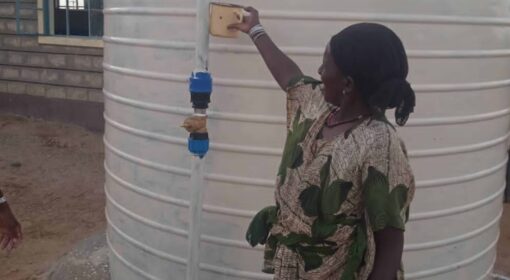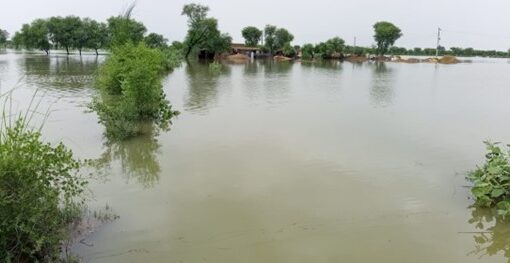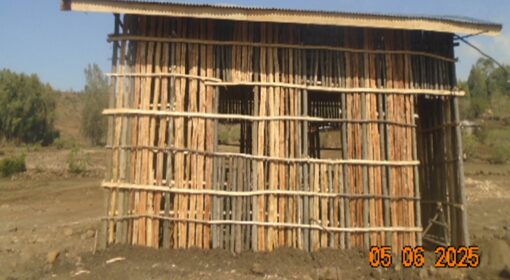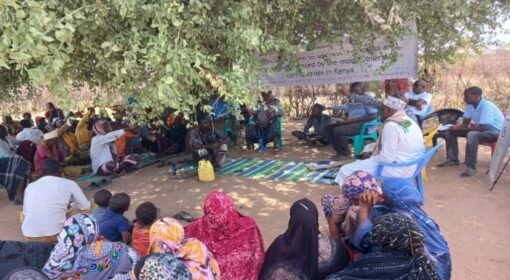by MIDP
This blog is part of a dossier on locally-led adaptation, featuring insights and lessons from the Reversing the Flow (RtF) program. RtF empowers communities in Bangladesh, Burkina Faso, Ethiopia, Kenya, and Sudan to build climate resilience through direct funding and a community-driven, landscape approach.
The Ewaso Nyiro River, flowing from the central highlands of Kenya from Mount Kenya, and the Aberdare Ranges, breathes life across 210,000 square kilometre (km²) of arid and semi-arid lands. For the Waso Boran communities of Merti Sub-County in Isiolo, the river is sacred — a nurturing mother, provider of water for people, livestock, smallholder farming, and biodiversity.
But she has become volatile. In recent years, severe land degradation, invasive species like Prosopis juliflora, and climate change have turned the once-gentle river into a raging flood threat. As deforestation and erosion worsen, so does the river’s fury.
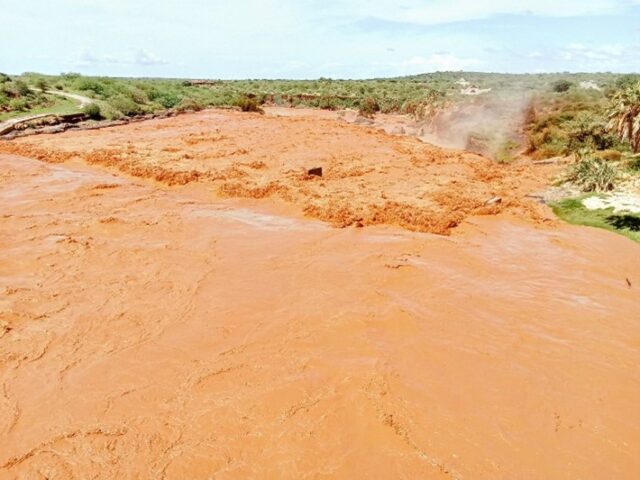 | 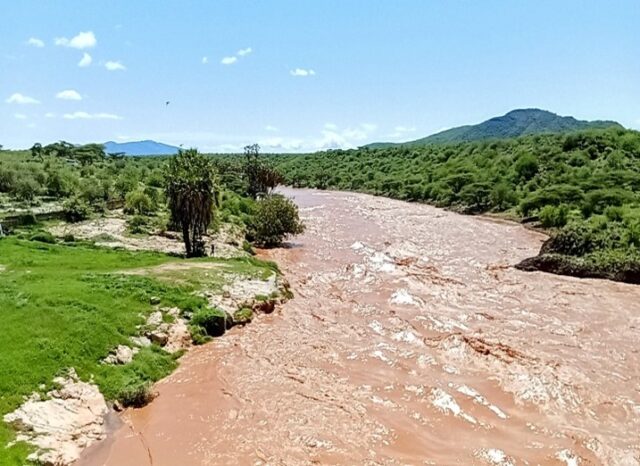 |
| Ewaso Nyiro River at Gotu Bridge (Images courtesy of MIDP) | |
From April 2024, the Ewaso Nyiro River overflowed its banks at Godh Rupa and Malka Funan, leaving 763 households displaced in Merti Sub-County, with Merti town particularly hard hit, seeing 570 families rendered homeless. Sericho and parts of Garbatula at Malka Daka-Gafarsa area were also cut off as the river changed its course, and several boreholes and schools were severely affected. The entire village of Iresaboru had to be relocated to a new area, while Badana village remains inaccessible and marooned.
These repeated natural disasters, characterized by submerged bridges, cut-off communities, destroyed homes, and loss of livelihoods, have instilled a profound sense of fear and urgency among the people of Merti.
Rather than wait for external aid, the people of Merti “took the bull by the horns.” They mobilized themselves through a culturally rooted and locally led approach, blending indigenous knowledge with action.
A flood response task force of 12 people was formed to conduct a surveillance exercise along the river, in which they have assessed and identified three urgent interventions; blockage of intake points at Godh Rupa, construction of a diversion channel at Malka Funan area, and rehabilitation of key canal at Malka Funan to safely guide floodwaters.
Mobilizing the community was the next big step where the task force brought together 65 (45 male; 20 female) elders from both Merti North and South to spearhead get buy-in and initiate fundraising efforts. Through this effort, KES 290,000 was raised from households (KES 500–1,000 each), KES 110,000 added by well-wishers totaling to KES 400,000 (amount in Euro), and used for mitigation work.
The community of Merti, driven by the courage of their elders to do the resource mobilization, didn’t just stand by as the Ewaso Nyiro, their volatile lifeblood, churned with renewed fury in April 2025. They stepped into the breach, their hands serving as tools of her restoration. It was a monumental undertaking, a testament to their unwavering spirit. They toiled tirelessly, seeking to mend the very fabric of their relationship with the river.
Their efforts were indeed major milestones, each shovel of river sand moved, each canal dug, a declaration of defiance against the raging waters. But the Ewaso Nyiro, ancient and complex, held surprises. “The work was done, and it did help to an extent. But because the community still experienced flooding in April 2025, it feels like nothing changed.” Said Mr. Osman Abdi, Taskforce member. This wasn’t a failure, but a stark reminder of the river’s intricate nature. The Ewaso Nyiro isn’t merely a channel to be redirected; she is a living entity, her currents and moods shaped by countless unseen forces. Her restoration demands more than just brute force; it requires a delicate dance, a blend of bioengineering – coaxing nature to heal itself with living barriers and natural solutions and grey infrastructure works, the robust, man-made interventions that lend strength where needed.
Despite challenges, including 5KM distances to sites, lack of transportation, and limited funds, the task force persevered. They reached out for support from partners like Northern Rangelands Trust (NRT) for motorbikes, fuel, and a vehicle to ease their movement. The experience also revealed important lessons with the need to involve women and youth more actively and the importance of using tractors rather than manual labor in heavy work. As Boru Kampicha reflected while showing the improvements at Malka Funan, “It reminded us of the similar efforts of flood mitigation we made back in 1987.”
To ensure the community’s unwavering trust and continued ownership of this intricate dance with the Ewaso Nyiro, the Merti Flood Committee held a feedback baraza meeting with the community to share progress reports, and explain how every shilling was utilized, fostering a profound sense of shared guardianship over the river’s community led restoration efforts. This transparent exchange is the very bedrock upon which the locally led principles and approaches of the “Reversing the Flow” Program are firmly enshrined, ensuring that the community remains the true conductor of their destiny, guiding the river’s flow with collective wisdom and trust.
 | 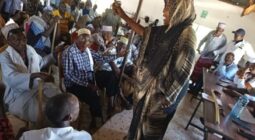 |
| Figure 2; Baraza feedback meeting organized by taskforce committee (Images courtesy of MIDP) | |
Despite the visible improvements from the mitigation efforts, the community still experienced flooding in April 2025. This led to mixed feelings among residents. While many acknowledged the work as a step in the right direction, they also recognized it as only a partial success — a clear reminder of the complex nature of the Ewaso Nyiro River. During community feedback sessions, residents emphasized the need for broader participation, especially involving women and youth, in both planning and implementation and a more comprehensive, long-term approach that blends physical infrastructure with ecosystem restoration. The committee was given full mandate to come up with possible plans, reach out to different stakeholders for resource mobilization and included 2 women ,2 youth male and 2 Person with Disability (PWD) all male totaling to 18 members. The feedback meeting was organized based on the advice by MID-P and the Metameta team during the monitoring visit done in April 2025.
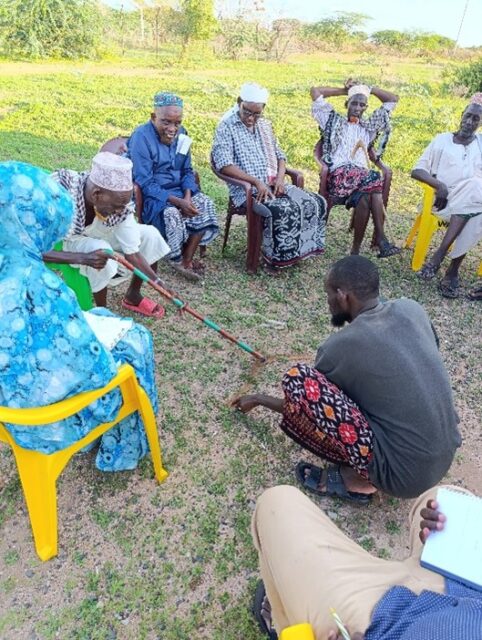 | 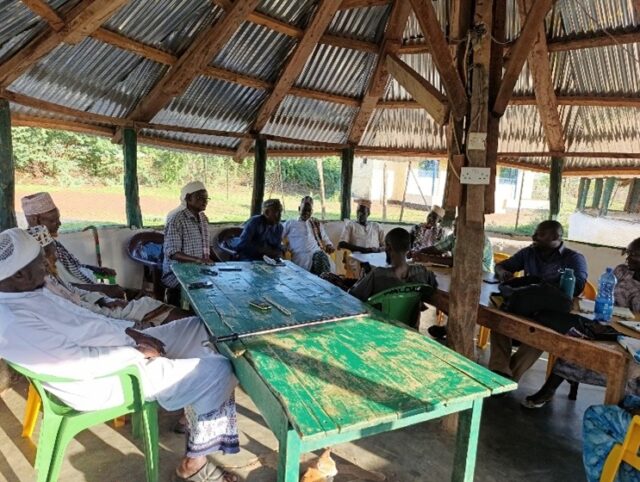 |
| Figure 3: Mr. Boru Kampicha demonstrating the work done at Malka funan during the feedback session with MID-P and Metameta (Images courtesy of MIDP) | |
Looking ahead, the taskforce, having learned the Ewaso Nyiro’s moods and met her fury, is now crafting a plea for more allies and partnerships, a fundraising proposal to bolster their strength. Their vision is grand: to permanently bind the river’s wandering spirit, guiding her back into her ancient, rightful streambed. This isn’t just about controlling water; it’s about giving the river back her dignity, in turn allowing her to stabilize the homes that depend on her and to generously offer her life-sustaining waters for both the farmer’s field and the family’s daily thirst. As Ali Boru, with the wisdom of the community in his voice, beautifully articulated, “If we succeed, not only will the lower stream communities of Bassa and Sericho drink deep from her bounty, but even our neighbors in Habaswein, Wajir County, will feel her renewed embrace, having better water access.”
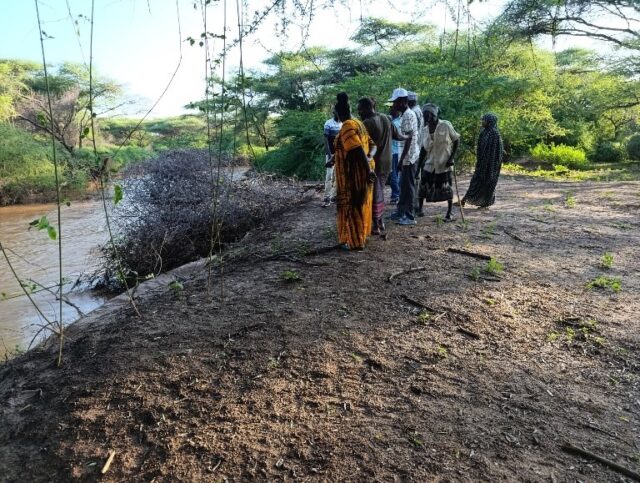
This is a testament to community resilience and local leadership in climate adaptation. The people of Merti have shown that when disaster strikes, indigenous knowledge, collective action, and a deep relationship with nature can inspire real solutions. Their work with the Ewaso Nyiro isn’t just flood control it’s reconciliation with a river that has shaped their lives for generations.
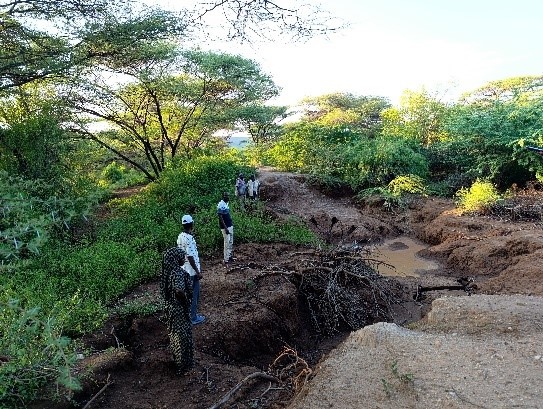 | 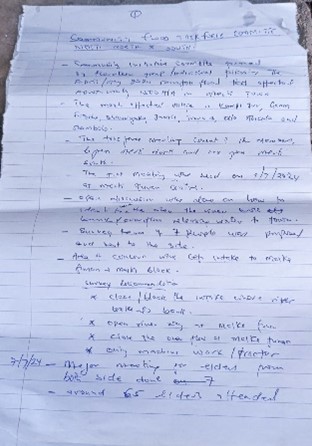 |
| Figure 5: Area at the risk that needs to be mitigated Figure 4: Sample of Report (Images courtesy of MIDP) | |
